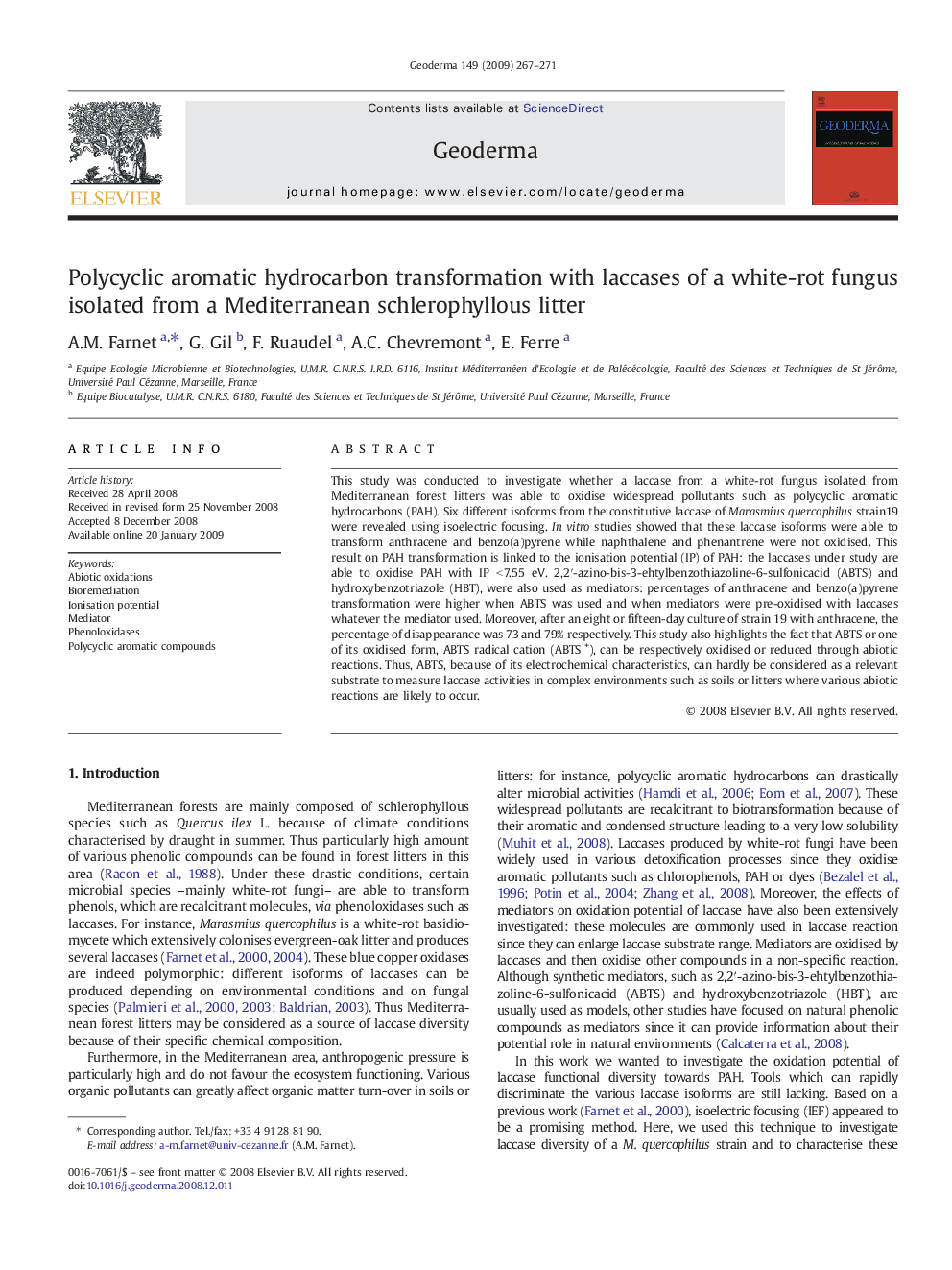| Article ID | Journal | Published Year | Pages | File Type |
|---|---|---|---|---|
| 4574580 | Geoderma | 2009 | 5 Pages |
This study was conducted to investigate whether a laccase from a white-rot fungus isolated from Mediterranean forest litters was able to oxidise widespread pollutants such as polycyclic aromatic hydrocarbons (PAH). Six different isoforms from the constitutive laccase of Marasmius quercophilus strain19 were revealed using isoelectric focusing. In vitro studies showed that these laccase isoforms were able to transform anthracene and benzo(a)pyrene while naphthalene and phenantrene were not oxidised. This result on PAH transformation is linked to the ionisation potential (IP) of PAH: the laccases under study are able to oxidise PAH with IP < 7.55 eV. 2,2′-azino-bis-3-ehtylbenzothiazoline-6-sulfonicacid (ABTS) and hydroxybenzotriazole (HBT), were also used as mediators: percentages of anthracene and benzo(a)pyrene transformation were higher when ABTS was used and when mediators were pre-oxidised with laccases whatever the mediator used. Moreover, after an eight or fifteen-day culture of strain 19 with anthracene, the percentage of disappearance was 73 and 79% respectively. This study also highlights the fact that ABTS or one of its oxidised form, ABTS radical cation (ABTS+), can be respectively oxidised or reduced through abiotic reactions. Thus, ABTS, because of its electrochemical characteristics, can hardly be considered as a relevant substrate to measure laccase activities in complex environments such as soils or litters where various abiotic reactions are likely to occur.
